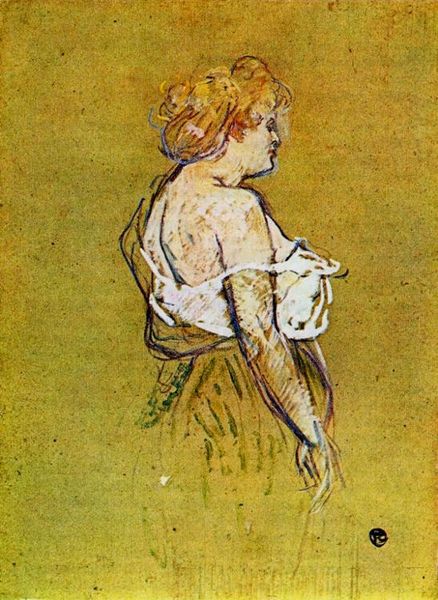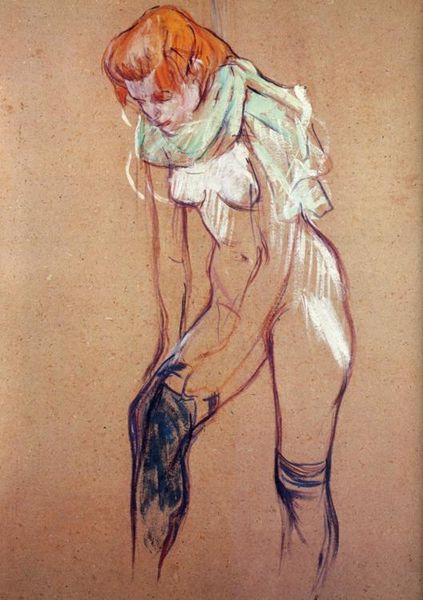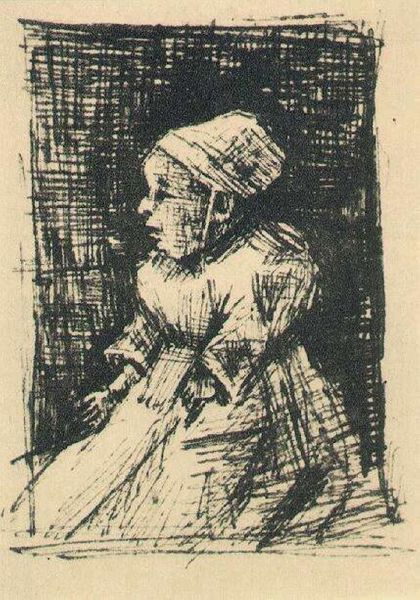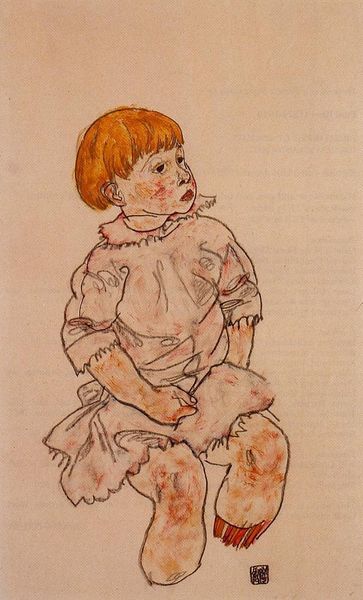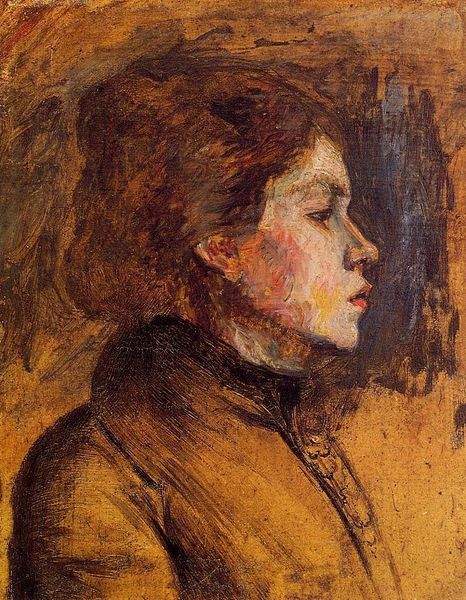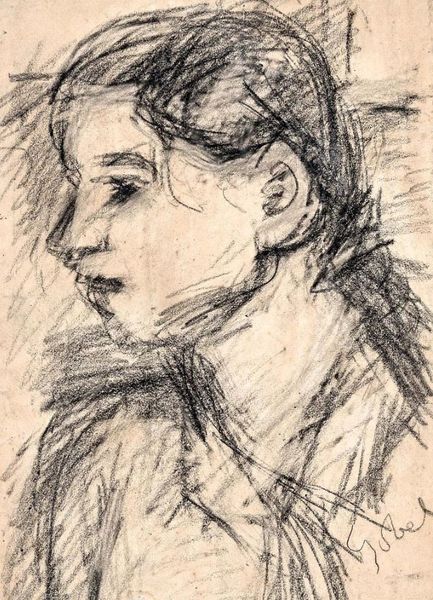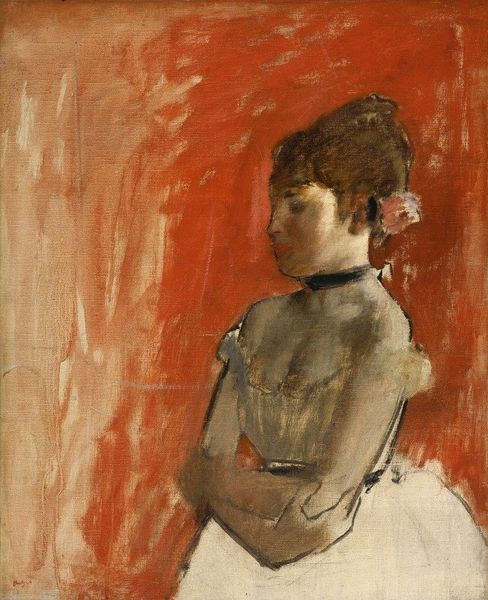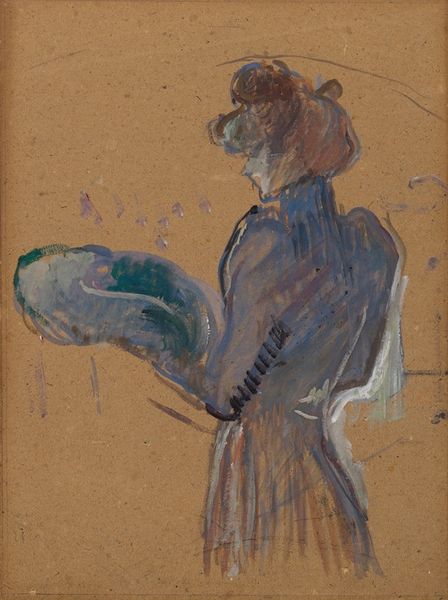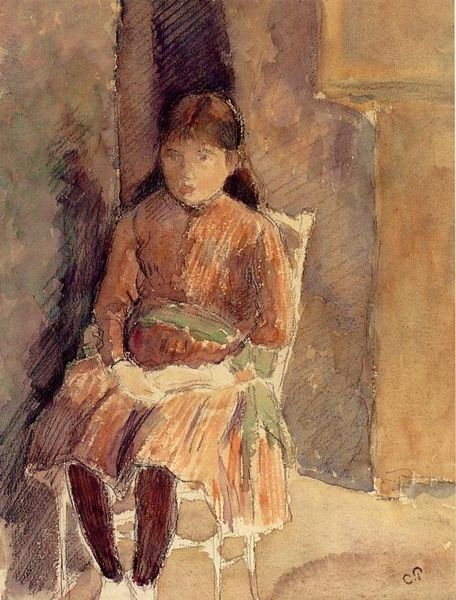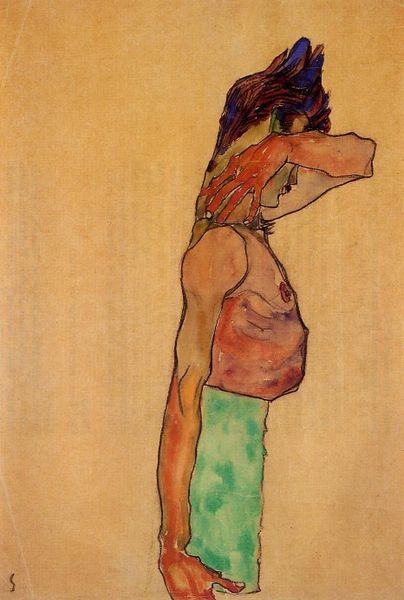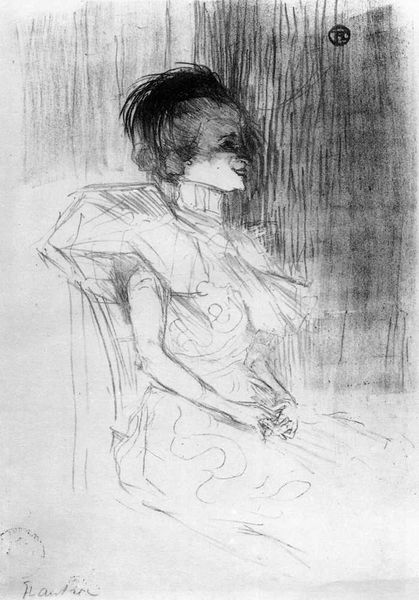
Dimensions: 80.7 x 60 cm
Copyright: Public domain
Curator: Immediately, there's a sense of intimacy and vulnerability in this work, isn't there? It feels unfinished, yet powerfully evocative. Editor: Indeed. And considering Toulouse-Lautrec’s typical subject matter and circles, understanding that power dynamic is key. This is "Lucie Bellanger," a pastel drawing from 1896, housed at the Musée Toulouse-Lautrec in Albi, France. Curator: A pastel, yes. I see that gorgeous color coming through. I see a female nude turning away, yet somehow commanding the viewer’s gaze, wouldn’t you agree? The way the shoulder is exposed, that almost defiant turn of the head...it's a performance of femininity but simultaneously rejects easy objectification. Editor: The art world and public perception of Lautrec, specifically related to depictions of women, are complicated and continue to spark intense debate, especially within museum studies. He undeniably captured the demimonde of late 19th-century Paris. Consider how the art world shaped, and continues to shape, his imagery and reputation, often focusing on sensational biographical elements. Curator: Certainly, he moved within particular social strata, painting subjects largely ignored or marginalized at the time, bringing a level of visibility—perhaps exploitation—to marginalized figures. How do we navigate this as a modern audience? It is an example of life imitating art or art shaping and affecting life? Editor: These are absolutely the conversations we must have! How do we create spaces for respectful critique, informed by the social realities of the time? The drawing's very sketch-like quality also reflects the accelerated pace of modern life at that moment. Curator: Right, capturing a fleeting moment, an Impressionistic gesture, where the rawness reflects her own lived experience, rather than being a purely aesthetic choice. There is the reality, perception and exploitation here and they cannot be unwound without care and consideration. Editor: That contextual sensitivity is key. Approaching artworks like "Lucie Bellanger" with both historical awareness and contemporary critical thinking helps to responsibly interpret challenging legacies within our collection. Curator: I find myself wanting to know her life story, separate from this rendering through a male gaze and patriarchal perspective. To remember her, her name, as an individual rather than simply a subject of his art. Editor: A perfect ending, prompting all of us to explore the complexities inherent in art historical analysis.
Comments
No comments
Be the first to comment and join the conversation on the ultimate creative platform.
